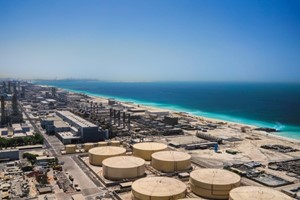As population growth, urbanization, and climate change continue to place strain on freshwater supplies, the need for innovative water desalination technologies becomes more apparent. Desalination is the process of removing salt and impurities from seawater or brackish water to obtain freshwater suitable for consumption and irrigation. While traditional desalination methods rely heavily on fossil fuels, solar-powered desalination plants offer a sustainable and eco-friendly alternative.
The Advantages of Solar-Powered Desalination Plants
Solar-powered desalination plants bring a plethora of advantages that make them a compelling solution for tackling water scarcity. Let's explore some of the key benefits:
Renewable and Sustainable: Solar energy is an abundant and renewable resource, making it an environmentally friendly alternative to fossil fuel-powered desalination plants.
Cost-Effective: With advancements in solar technology and decreasing costs of solar panels, solar-powered desalination becomes increasingly competitive, offering long-term cost savings compared to traditional desalination methods.
Scalability: Solar desalination plants can be modular and easily scalable, allowing for customized installations that suit various water demands, from small communities to large urban areas.
Reduced Carbon Footprint: Solar-powered desalination significantly reduces greenhouse gas emissions compared to conventional desalination plants, contributing to mitigating climate change.
Energy Independence: By harnessing solar power, regions with high solar potential can become self-sufficient in freshwater production, reducing dependency on external water sources.
The Future of Solar-Powered Desalination
Solar-powered desalination holds great promise for meeting the world's future water demands sustainably. Here are some key takeaways on its potential:
Global Impact: By 2050, it is estimated that 8 billion people will reside in water-stressed areas. Solar-powered desalination plants can play a crucial role in securing access to freshwater for these populations.
Technological Innovations: Ongoing research and development efforts are focusing on improving desalination efficiency, optimizing maintenance costs, and exploring new solar-powered desalination techniques.
Collaborative Partnerships: Governments, private companies, and research institutes are working together to promote the adoption of solar-powered desalination technologies on a global scale.
Economic Opportunities: Solar-powered desalination represents a growing market with immense economic potential, creating job opportunities and driving sustainable economic growth.
In conclusion, solar-powered desalination plants offer a sustainable and cost-effective solution to address the mounting global water scarcity problem. By harnessing the power of the sun, we can transform seawater and brackish water into a vital resource for communities around the world. As we continue to integrate solar energy with advanced water treatment technologies, we pave the way for a future where clean and safe water is accessible to all.
Advantages of Solar-Powered Desalination Plants
The integration of solar power in desalination plants offers numerous advantages over traditional methods. Let's explore some of the key benefits:
Sustainable and Renewable Energy: Solar power is a clean and abundant source of energy. By using solar energy, desalination plants reduce dependence on fossil fuels, thus mitigating greenhouse gas emissions and combating climate change.
Cost-Efficient Operations: Once installed, solar-powered desalination plants have lower operational costs compared to conventional plants relying on fossil fuels.
Independence from Grid Infrastructure: Remote areas lacking access to centralized power grids can greatly benefit from solar-powered desalination plants. These self-sustaining facilities can provide clean water even in regions with limited infrastructure.
Scalability and Flexibility: Solar-powered desalination plants can be easily scaled up or down to match the water demand of a specific region. They offer a flexible solution that can adapt to changing water requirements over time.
Key Takeaways and Future Trends
Solar-powered desalination plants are transforming resource management by harnessing the sun's energy to produce clean water sustainably. As the world faces increasing water scarcity, these plants offer a viable solution that combines environmental sustainability, cost efficiency, and scalability. Key takeaways from this revolution include:
Solar-powered desalination plants use photovoltaic systems and reverse osmosis to generate electricity and purify seawater.
Advantages include sustainable energy use, cost efficiency, independence from grid infrastructure, scalability, and reduced environmental impact.
These plants provide a compelling solution for water-scarce regions, especially in remote areas with limited access to centralized power grids.
As technology advances, further research is focused on enhancing efficiency, minimizing costs, and developing next-generation membranes for more efficient desalination processes.
Solar-powered desalination plants are a testament to the endless possibilities that arise when innovative technology meets sustainability. With their potential to alleviate water scarcity in a clean and efficient way, these plants play a crucial role in revolutionizing resource management around the globe. As we continue to strive for a sustainable future, solar-powered desalination plants are poised to make a lasting impact on the availability of clean water for generations to come.
The Rise of Solar-Powered Desalination Plants
Solar-powered desalination plants leverage the abundant and renewable energy of the sun to produce freshwater from seawater or brackish water sources. By harnessing solar power through photovoltaic panels or concentrated solar thermal systems, these plants offer a sustainable and economically viable approach to meet the growing demand for freshwater.
Advancements in solar technology have significantly enhanced the efficiency and cost-effectiveness of these desalination plants. As a result, solar-powered solutions are becoming increasingly prevalent, especially in regions with high solar irradiance such as the Middle East, North Africa, and Australia.
Modularity & Scalability: These plants can be designed in a modular manner, allowing for easy scalability to increase water production based on demand. They offer flexibility and adaptability to changing needs.
Low Operating Costs: Solar power is a free and abundant energy source, significantly reducing the operational expenses of desalination plants. This makes desalinated water more affordable and accessible.
According to industry statistics, the global desalination market is projected to reach a value of $491 billion by 2025, with a compound annual growth rate (CAGR) of 9.3% from 2019 to 202 This demonstrates the increasing demand and recognition of desalination as a viable solution to overcome water scarcity challenges.
Edited by Yehya Aoun












